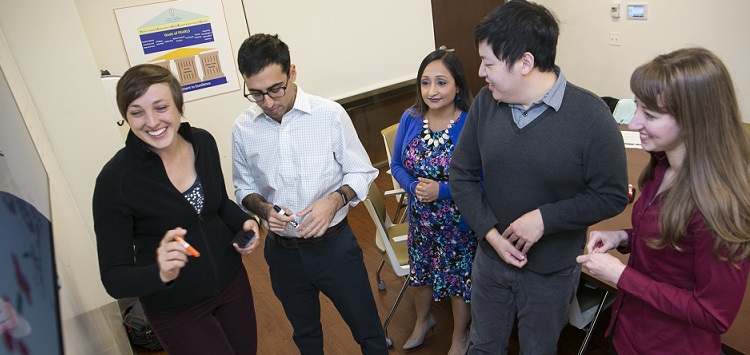IE
Interacting with the Environment (IE) presents how the human organism, whose immune system co-evolved with its microbial partners, maintains homeostasis.
Normal immune function is contrasted to immune dysfunction including immune deficiencies, hypersensitivity, and autoimmunity.The dynamics of immune modulation are investigated by evaluating the pharmacology of immunosuppressive and anti-inflammatory medications. The clinical applications of immunology are further extended during an introduction to rheumatology, which is paired with the study of the musculoskeletal system. Structure lab provides the venue for detailed anatomical study of the limbs, and is aligned with sessions on the musculoskeletal examination and bedside ultrasound.
Students also explore the contribution of microorganisms to maintaining health and to causing disease. Students learn how commensal organisms can cause disease when introduced into anatomical sites to which they have not adapted. They also learn how pathogenic microbes evade the immune system and subvert normal host cellular functions. Infectious diseases are presented using a systems-based approach that incorporates the pharmacological principles of antimicrobial therapy. The course ends with infections involving the central nervous system, thereby providing a link to the next course, The Human Condition.
Students engage in a learning session at the Health System core laboratories in which they must infer from pathology reports the identity of the infectious agent responsible for specific cases. This experience is related to a clinical microbiology lab that takes place in the Structure Laboratory as the basis of a problem-based learning activity. Specific curricular time is set aside for instruction in the basic techniques of the modern clinical laboratory and the evidence-based medicine principles of using diagnostic testing.
Complementing the science, students are introduced to their community Pediatric preceptor.

